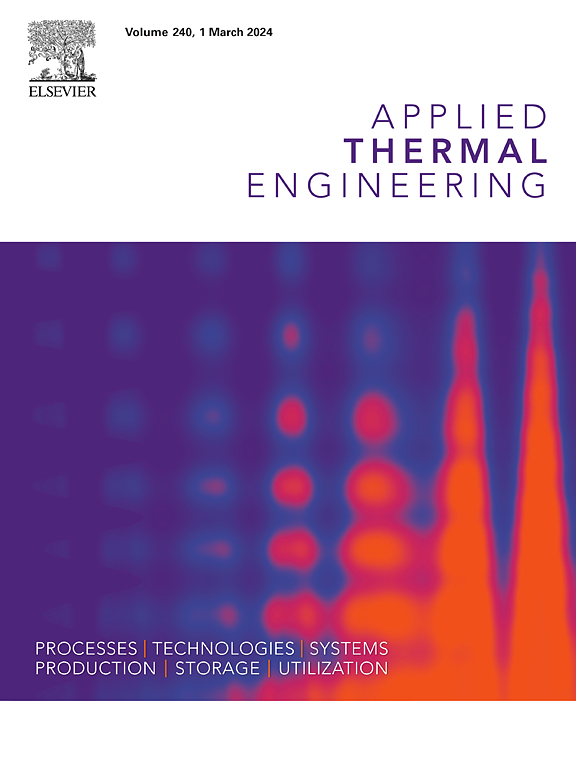Thermal safety and risk assessment of lithium-ion batteries aged in low-temperature and low-pressure environments
IF 6.9
2区 工程技术
Q2 ENERGY & FUELS
引用次数: 0
Abstract
The safety of lithium-ion batteries (LIBs) is a key factor leading to frequent fire accidents in new energy vehicles. The special environmental conditions of high-altitude regions with wide temperature ranges and low pressure present even greater challenges to the cycle performance and safety of LIBs, increasing the risk of thermal runaway. Therefore, to effectively reduce the occurrence of battery safety incidents, there is an urgent need to develop a thermal safety (TS) evaluation model for LIBs that is suitable for high-altitude environments, to enhance the monitoring and management of battery safety. This study proposes a TS evaluation model for LIBs in high-altitude environments and uses machine learning techniques to assess the safety risk of aged batteries. A dataset comprising 15 different aging conditions is constructed based on experimental data, considering ambient temperature, pressure, and cycle number. Key TS characteristic parameters, including the turning point of expansion force (Ftp), sudden drop point of expansion force (Fsr), and surface temperature difference (ΔT), are selected as critical indicators for evaluating the TS of LIBs. Pearson correlation analysis is conducted to identify aging characteristic parameters correlated with TS parameters. A support vector regression algorithm is then used to establish the TS evaluation model. After cross-validation and grid search optimization, the model’s prediction accuracy significantly improves, with R2 values ranging from 0.853 to 0.987, demonstrating good accuracy and stability. Based on the predicted TS parameters, a battery risk assessment method is proposed. The results show that the accuracy of the risk assessment using the predicted values exceeds 99%. This study provides theoretical and methodological support for the safety management and early warning of battery systems in low-temperature and low-pressure environments.
低温低压老化锂离子电池热安全性及风险评估
锂离子电池的安全性是导致新能源汽车火灾事故频发的关键因素。高海拔地区宽温度范围和低压的特殊环境条件对lib的循环性能和安全性提出了更大的挑战,增加了热失控的风险。因此,为有效减少电池安全事故的发生,迫切需要开发适用于高海拔环境的锂电池热安全(TS)评价模型,加强对电池安全的监测和管理。本研究提出了高海拔环境下锂电池的TS评估模型,并使用机器学习技术评估老化电池的安全风险。基于实验数据,考虑环境温度、压力和循环次数,构建了包含15种不同老化条件的数据集。选择膨胀力转折点(Ftp)、膨胀力骤降点(Fsr)、表面温差(ΔT)等关键TS特征参数作为评价lib TS的关键指标。进行Pearson相关分析,识别与TS参数相关的老化特征参数。然后采用支持向量回归算法建立TS评价模型。经过交叉验证和网格搜索优化,模型的预测精度显著提高,R2值在0.853 ~ 0.987之间,具有较好的准确性和稳定性。基于预测的TS参数,提出了一种电池风险评估方法。结果表明,利用预测值进行风险评价的准确率超过99%。本研究为低温低压环境下电池系统的安全管理和预警提供了理论和方法上的支持。
本文章由计算机程序翻译,如有差异,请以英文原文为准。
求助全文
约1分钟内获得全文
求助全文
来源期刊

Applied Thermal Engineering
工程技术-工程:机械
CiteScore
11.30
自引率
15.60%
发文量
1474
审稿时长
57 days
期刊介绍:
Applied Thermal Engineering disseminates novel research related to the design, development and demonstration of components, devices, equipment, technologies and systems involving thermal processes for the production, storage, utilization and conservation of energy, with a focus on engineering application.
The journal publishes high-quality and high-impact Original Research Articles, Review Articles, Short Communications and Letters to the Editor on cutting-edge innovations in research, and recent advances or issues of interest to the thermal engineering community.
 求助内容:
求助内容: 应助结果提醒方式:
应助结果提醒方式:


